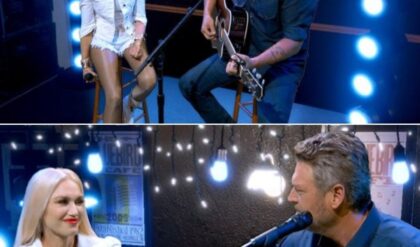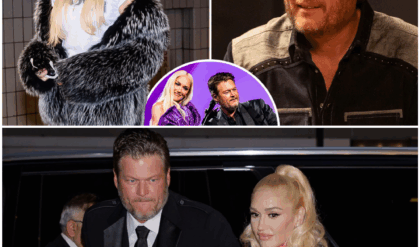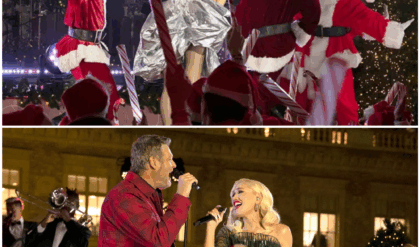In a world where every whisper could be your last, the terror of sound-hunting aliens has become one of Hollywood’s most gripping nightmares. The A Quiet Place franchise, born from John Krasinski’s visionary 2018 directorial debut, has masterfully turned silence into a weapon of suspense, racking up over $900 million at the global box office across three films. Now, as the calendar inches toward 2027, Paramount Pictures has locked in a summer slot for the fourth installment: A Quiet Place Part III, set to premiere on July 30, 2027. Directed, written, and produced by Krasinski himself, this sequel promises to escalate the stakes, proving that in the face of extinction, mere quietude won’t cut it—humanity’s fightback demands cunning, sacrifice, and perhaps a deafening roar.
The announcement, which came amid a flurry of release date adjustments in early October 2025, underscores Paramount’s unwavering faith in the series’ formula: heart-pounding tension wrapped in intimate family drama. Originally eyed for a 2025 bow, the project was shelved to accommodate Krasinski’s packed schedule, including his work on the whimsical family fantasy IF and potential Marvel commitments. When it resurfaced in August 2025 with a July 9, 2027, target, fans rejoiced—only for the studio to nudge it three weeks later to avoid clashing with James Gunn’s Superman: Man of Tomorrow. The move to July 30 clears the deck for a solo summer showdown, positioning the film as a must-see event in a blockbuster-heavy season. As one X user quipped in the wake of the shift, “A Quiet Place 3 dodging Superman? Smart—those Kryptonian screams would ruin the vibe anyway.”
To understand the feverish anticipation, one must revisit the roots of this auditory apocalypse. The franchise kicked off with A Quiet Place in 2018, a low-budget ($17 million) indie darling that premiered at SXSW to thunderous applause—ironic, given the premise. Krasinski, then best known as the affable Jim from The Office, co-wrote the script with original creators Scott Beck and Bryan Woods, drawing from a simple, terrifying conceit: blind extraterrestrial “Death Angels” crash-land on Earth, drawn inexorably to noise. Their armored exoskeletons render them nearly indestructible, but their Achilles’ heel is hypersensitivity to sound, forcing survivors into a mime-like existence.
At the center of the original film’s emotional core was the Abbott family—parents Lee (Krasinski) and Evelyn (Emily Blunt, his real-life spouse), and their children Marcus (Noah Jupe), Regan (Millicent Simmonds, who is deaf), and newborn Beau. Living on a remote farm, the Abbotts navigate this new world with sign language, sand-walking paths, and feedback devices that exploit the creatures’ sonic vulnerability. The plot unfolds in near-real-time over three months post-invasion, culminating in a devastating sacrifice that cements the film’s status as a modern horror classic. Critics hailed its innovative sound design—courtesy of Oscar winners Erik Aadahl and Ethan Van der Ryn—which plunged audiences into a vacuum of silence punctuated by heart-stopping bursts. It earned a 96% on Rotten Tomatoes, grossed $341 million worldwide, and snagged an Oscar nomination for Best Sound Editing. More than scares, it resonated as a poignant allegory for parental fears, especially poignant given Krasinski and Blunt’s own young daughters at the time.
A Quiet Place Part II, released in May 2021 after COVID-induced delays, picked up mere minutes after the first film’s finale. With Lee gone, Evelyn leads the remnants—Regan, Marcus, and baby Beau—into uncharted territory, guided by a cryptic radio signal hinting at safe havens. Joined by Emmett (Cillian Murphy), a grizzled survivor haunted by loss, the group ventures beyond their farm, uncovering fractured colonies and the invasion’s chaotic Day One. Djimon Hounsou appeared as a mysterious island dweller, teasing broader lore. Filmed in upstate New York with a $61 million budget, the sequel amplified the scope while preserving intimacy, blending practical effects (those towering creatures were mostly puppets and animatronics) with emotional depth. Regan’s arc, leveraging her cochlear implant’s high-frequency screech as a weapon against the aliens, empowered Simmonds’ performance, making her the de facto hero. It scored 91% on Rotten Tomatoes and hauled in $297 million globally, proving the franchise’s legs despite pandemic-era theater hesitancy.
The universe expanded further with 2024’s A Quiet Place: Day One, a prequel helmed by Pig director Michael Sarnoski. Shifting focus to Manhattan’s zero hour, it followed terminally ill poet Samira (Lupita Nyong’o) and British tourist Eric (Joseph Quinn, fresh off Stranger Things) as meteors rain down, unleashing the creatures amid urban pandemonium. Hounsou reprised his island role as Henri, bridging to Part II, while Nyong’o’s raw vulnerability—coupled with her cat Frodo as a silent companion—infused the chaos with humanity. Budgeted at $67 million, it opened to $53 million domestically and crossed $260 million worldwide, buoyed by strong word-of-mouth and a 86% Rotten Tomatoes score. Critics praised its restraint amid spectacle, though some noted it leaned heavier on atmosphere than plot twists. The film’s subway sequence, a symphony of muffled screams and echoing roars, remains a visceral standout.
This trilogy of releases—each building on the last—has grossed nearly $900 million, with budgets ballooning modestly to match ambition. The secret sauce? Krasinski’s insistence on family as the emotional anchor, turning genre tropes into profound explorations of grief, resilience, and ingenuity. Sound, or its absence, isn’t just a gimmick; it’s a metaphor for unspoken traumas, amplified by Simmonds’ authentic portrayal of deafness. The creatures, evolved from initial sketches into biomechanical horrors with inner-ear amplifiers, embody primal dread—unseen until they strike, their clicks and shrieks a prelude to carnage.
Enter A Quiet Place Part III, the direct sequel to Part II that Krasinski has long envisioned as the saga’s capstone. Plot details remain shrouded in secrecy, but teases suggest a bolder pivot: survival evolving from evasion to confrontation. Picking up post-Part II, where Regan broadcasts her feedback discovery via radio—igniting a potential resistance—the film could center on her quest to unite scattered survivors against the horde. Krasinski has hinted at “a whole arc of ideas” since scripting Part II, emphasizing humanity’s counteroffensive. Expect the island colony from Part II to factor in, perhaps as a fragile bastion where Evelyn (Blunt) fortifies defenses while grappling with leadership’s toll. Marcus, now a teen, might step into action-hero shoes, his asthma a lingering vulnerability turned strength.
Casting rumors swirl like whispers in the wind. Simmonds is confirmed via early IMDb listings, her Regan poised for a warrior’s evolution—possibly wielding amplified tech to turn the aliens’ senses against them. Blunt’s return as Evelyn seems inevitable, her maternal ferocity the franchise’s bedrock; in a 2021 interview, she revealed Krasinski’s trilogy blueprint includes her character’s arc. Jupe, aged up from child to young adult, could reprise Marcus, exploring trauma’s long shadow. Murphy and Hounsou’s fates—Emmett’s ambiguous end and Henri’s boat escape—leave doors ajar for cameos, while Nyong’o and Quinn’s prequel survivors might cameo if timelines align. Krasinski, absent from onscreen duties since his sacrificial exit, stays behind the camera, channeling his Jack Ryan intensity into direction. Producers from Platinum Dunes and his Sunday Night banner ensure continuity, with cinematographer Polly Morgan likely returning for those signature 35mm visuals—gritty, textured, and alive with shadow.
Production timelines point to principal photography ramping up in mid-2026, leveraging New York sets for urban-rural contrasts. The budget, speculated at $80-100 million, will fund expanded creature designs—rumors of variants with adaptive hearing—and practical stunts, like silent boat chases or sonic booby traps. Sound design remains paramount; Aadahl and Van der Ryn’s team could push boundaries with binaural audio for IMAX, immersing viewers in the creatures’ echolocation. The tagline—”this time survival will demand more than just staying quiet”—hints at noise as a tactical tool: fireworks, amplified signals, or even orchestral swells to lure and dismantle the invaders.
Fan reactions on X (formerly Twitter) have been a mix of exhilaration and impatience. “July 30, 2027? I’ll be holding my breath till then,” one user posted, echoing the series’ ethos. Others speculate wildly: “Regan starts a silent revolution? Sign me up.” Memes abound, from “A Quiet Place 3: The Screaming” to quips about theater etiquette. The delay, while frustrating, buys time for polish—Krasinski’s perfectionism shone in reshoots that elevated Part II. In a post-Day One landscape, Part III could weave prequel threads, perhaps revealing the aliens’ origins or humanity’s first failed counterstrikes, enriching the lore without diluting the dread.
What elevates A Quiet Place above jump-scare schlock is its humanity. Amid the horror, it’s a love letter to non-verbal communication—sign language fluency, parental intuition, sibling bonds. Simmonds’ casting, informed by her lived experience, avoids tokenism, making Regan’s agency authentic. Blunt’s Evelyn embodies quiet rage, a far cry from damsel tropes. As the franchise eyes billion-dollar status, it risks franchise fatigue, but Krasinski’s restraint—eschewing gore for implication—keeps it fresh. Expansions like the 2024 video game A Quiet Place: The Road Ahead and Halloween Horror Nights houses prove its cultural grip, from viral TikTok challenges to merchandise like silent board games.
Yet, challenges loom. The 2027 slot pits it against a crowded field—Minecraft sequels, Simpsons revivals—but its PG-13 appeal to families and thrill-seekers positions it as counterprogramming to superhero spectacles. Post-Day One‘s success sans Abbotts, Part III must balance legacy with innovation, lest it echo quieter sequels in other sagas.
As July 30, 2027, approaches, A Quiet Place Part III beckons like a siren’s call—silent, seductive, deadly. In Krasinski’s world, noise isn’t just fatal; it’s rebellion. Will humanity’s clamor herald salvation or slaughter? One thing’s certain: when the credits roll, theaters will erupt in the loudest applause this side of the invasion. Until then, hush— the silence is listening.





